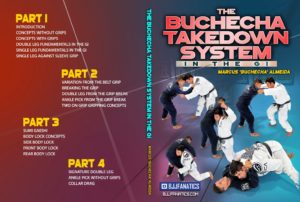When you train BJJ where most of the focus is on the ground, you won’t always have time to train Judo or Wrestling as much as you’d like. It’s about making a choice: do you want to be a fantastic ground grappler with decent takedowns or do you want to have to have a good ground game and good takedowns?
There is only so much time in the day to learn and drill techniques. Our advice is to focus on learning 5-6 takedowns which you will constantly drill and include in your game. The rest of your time should be spent on bettering your ground game
Brazilian Jiu-Jitsu is growing at an amazing rate worldwide. More people are training in all corners of the world. BJJ is evolving.
The direction that sport BJJ is going is worrying many. Nowadays modern Ju-Jitsu is guard centric and most competitors don’t even bother with takedowns. They just pull guard and aim to sweep from the guard or worse work for advantages. BJJ has become more of a game than a combat system.
John Danaher has recently talked about what he believes will be the next big evolution in BJJ: it’s very own unique approach to standing position and how his next mission is to develop and improve the stand up game for BJJ.
In this Instagram post Danaher talks about you should always favor frontal takedowns in BJJ:
“Takedowns in Jiu jitsu – favor those where you face your opponent: There are many sins in Jiu jitsu, but the most unforgivable one is BACK EXPOSURE.
If you expose your back to your opponent he now gets the highest possible score and has access to the most high percentage submissions in the sport while you can do nothing but defend. As such, when it’s time to decide what kind of takedowns you should employ, DEGREE OF BACK EXPOSURE is certainly a very important consideration. Some takedowns require you to completely turn your back to an opponent.
This certainly enables you to generate great throwing power, but comes at a high price – any slip up on your part and your opponent gets a big score and a very good chance to finish you. In most grappling sports such as Judo, the rules reward risk – if you miss a throw and expose your back, the referee will protect you by intervening and restarting you in standing position. In Jiu jitsu, no one will intervene on your behalf. If you make an error and expose your back, you will have to fight your way out of it and recover.
As such, there is an understandable preference for takedowns with minimal back exposure. To be sure, there are other potential dangers besides back exposure, but they are generally not as severe. Here, Gordon Ryan tests the formidable takedown defense of Georges St Pierre with a double leg takedown. As long as his posture is remains strong there is little back exposure. Note how he clears the lead arm to lessen another big risk of leg takedowns – neck exposure – Mr St Pierre has a nasty front headlock.
When you start building your takedown repertoire, take into consideration the unique features of Jiu jitsu that may make you favor some takedown methods over others. What are your favorites? How well do they adapt to unique rules and directives of Jiu jitsu?”
In this video, Danaher the takedowns he feels are most appropriate for BJJ. These are takedowns and throws that are specially adapted to be fit BJJ’s rules.
Learn how to wrestle in the gi from one of BJJ’s most successful champions ever, Marcus “Buchecha” Almeida.
Buchecha explains his concepts around how to read his opponents and choosing which takedown is best, how he breaks stubborn grips, and how even much smaller fighters can still find success by focusing on these fundamentals.
The post John Danaher On Why You Should Favor Frontal Takedowns in BJJ appeared first on Bjj Eastern Europe.

